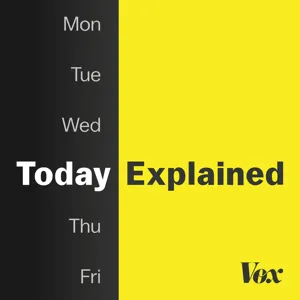Podcast Summary
Downtown Salt Lake City Thriving Amid Pandemic: Salt Lake City's downtown area is experiencing unprecedented growth, with 139% of pre-COVID activity in May 2021, more new apartments built than in downtown NYC, and a desirable urban lifestyle due to access to nature, tech jobs, and unique growth pattern.
While many downtown areas in the US are struggling to recover from the pandemic, Salt Lake City, Utah, is not only recovering but thriving. According to data from the University of Toronto, downtown Salt Lake City had 139% of its pre-COVID activity in May 2021, compared to only 67% in New York City and 72% in Phoenix. This growth is unusual because most US metro areas are growing at the edges, but Salt Lake City's growth is happening at the center, particularly in the downtown area. In fact, more apartments were built in downtown Salt Lake City last year than in downtown New York City. This influx of new housing is changing the feel of the downtown area, with cranes visible everywhere. Salt Lake City's success can be attributed to its access to nature, recent attraction of tech and finance jobs, and unique pattern of growth. However, there is one potential threat to this success: a proposed highway expansion that could disrupt the downtown area. Despite this challenge, Salt Lake City's downtown is worth watching as an example of successful urban revitalization.
Transforming Salt Lake City's downtown into a walkable and bikeable community: Salt Lake City, once car-centric, is now encouraging new development, adding mid-block crossings, walkways, and bike lanes, and making residential living downtown more appealing, leading to high demand for housing and high ridership on public transit
Salt Lake City, once notorious for its car-centric urban design and lack of pedestrian-friendly infrastructure, is transforming its downtown core into a vibrant, walkable, and bikeable community. This is happening despite being the capital of a red state and historically known for its wide roads and long blocks, which were designed for ox carts in the 19th century. The city has addressed these design flaws by encouraging new development, which includes adding mid-block crossings, walkways, and bike lanes. Salt Lake City has also made residential living downtown more appealing by laying out a long-term plan and making it easy to build. These efforts have led to a surge in demand for housing, with the city experiencing high ridership on its free public transit system and reaching pre-COVID levels. Despite the challenges of high housing costs and limited space for expansion, Salt Lake City's commitment to creating a walkable and bikeable downtown is a promising example for other cities looking to make similar improvements.
Salt Lake City's proactive planning and regulations fueled its housing boom: Salt Lake City's strategic planning, including allowing more density and reducing parking requirements, attracted developers and residents before the downtown development boom, leading to faster permit approvals and inspections and making it a top city for housing construction per capita.
Salt Lake City's strategic planning and regulatory changes a decade ago have contributed significantly to its current housing boom. By allowing more density and reducing parking requirements, the city attracted developers and new residents before the downtown development boom. This proactive approach led to faster permit approvals and inspections, making Salt Lake City a leader in housing construction per capita compared to other major cities. The success of this virtuous loop, as described by a local developer, is further fueled by robust job growth, increasing demand for housing, and the influx of new residents. Additionally, the presence of the Mormon church and its influence on the city's development plans have played a role in creating an attractive and desirable living environment.
The Church's Unique Role in Salt Lake City's Development: The Church's historical and religious significance, affordable living, and young population make Salt Lake City an attractive alternative. However, the future of the city and the region depends on addressing the Great Salt Lake's challenges.
The Church of Jesus Christ of Latter-day Saints, which owns a significant portion of downtown Salt Lake City's land and buildings, has unique motivations as a property owner. They prioritize the long-term vitality of the area due to its proximity to their sacred temple, Temple Square. The church played a crucial role in kickstarting downtown Salt Lake City's residential boom during the recession. However, the downtown area might not seem very lively at night compared to other midsize cities. Salt Lake City has recently emerged as an affordable alternative for young people, particularly those into music, who might have otherwise considered moving to pricier cities like Seattle or New York. Despite these positives, there's a concern about the future of Salt Lake City due to the health of its namesake, the Great Salt Lake. The lake is in trouble, and its potential negative impacts on the region's economy, health, and identity could be significant. It's essential to address the lake's issues to ensure the continued success of Salt Lake City and the state of Utah. In summary, Salt Lake City's unique combination of historical and religious significance, affordable living, and young population make it an attractive alternative to pricier cities. However, the future of the city and the region hinges on addressing the challenges facing the Great Salt Lake.
The Great Salt Lake's Water Crisis: Consequences for Ecosystem and Communities: The Great Salt Lake in Utah is shrinking and becoming saltier due to human activities, leading to negative consequences for the ecosystem and local communities, including dust plumes, inability to use boats, and death of millions of birds. Urgent action is needed to increase water flow and reduce water usage.
The Great Salt Lake in Utah is facing a severe water crisis, which is causing the lake to shrink and become saltier, leading to negative consequences for the ecosystem and local communities. The lake, which is a terminal basin, has been losing water due to human activities such as agriculture and city growth. As a result, the lake has reached several tipping points, including the dust, boating and recreation, and salinity tipping points. The consequences of these tipping points include dust plumes, the inability to use boats on the lake, and the death of millions of birds due to the high salinity levels. The situation is so dire that the ecosystem is at risk, with potential long-term consequences for the birds that rely on the lake for food. To address this issue, it is crucial for Utah to find ways to increase water flow into the lake and reduce water usage. Additionally, individuals can support efforts to conserve water and raise awareness about the importance of the Great Salt Lake.
The Great Salt Lake's Long-Term Collapse Could Have Devastating Consequences: The collapse of the Great Salt Lake could lead to ecological damage, economic losses, and health risks for the region, including the death of millions of birds, decimation of industries, and dust storms exposing harmful substances.
The Great Salt Lake in Utah is facing a long-term trajectory of collapse, which could have devastating ecological, economic, and health consequences for the region. The loss of brine shrimp and brine flies could lead to the death of millions of birds, while the decimation of companies that extract minerals and Salt Lake City's skiing industry could result in significant economic losses. Dust storms, which could expose nearby communities to harmful substances like arsenic, are also a major concern. However, there's a glimmer of hope as the state's legislature has recently taken steps to address the water crisis, such as passing bills to improve water efficiency in agriculture. Downtown Salt Lake City's growth could even help solve the water crisis by encouraging water conservation and reducing the demand for diverted water. Despite these efforts, more needs to be done, and environmental groups are suing the state to force faster action.
Promoting sustainable growth through increased city density: Cities can decrease water consumption by building more densely and reducing lawns, offering a hopeful alternative to the zero-sum perspective of growth
Cities facing water scarcity can promote sustainable growth by increasing density. The example of Salt Lake City illustrates this, as half of its city water usage goes towards landscaping, particularly Kentucky bluegrass lawns. By building more downtown and reducing the number of lawns, Salt Lake City has actually decreased its water consumption despite population growth. This shift towards density is crucial for cities and towns aiming to grow while conserving water resources. Furthermore, the Salt Lake City story offers hope that we can move beyond the current zero-sum perspective of growth, where it feels like cities must compete against states, nature, or long-time residents. Instead, this story highlights the potential for collaborative solutions that benefit all parties involved.
Cooperation and common ground in balancing economic growth and environmental concerns: Despite economic and environmental challenges, cities can find common ground and work towards solutions. The housing crisis and climate change are major issues, but investment opportunities still exist with careful consideration.
Despite the challenges of balancing economic growth with environmental concerns, cooperation and finding common ground is possible. The example of Salt Lake City and its shared history and values serves as a reminder that cities without such ties can still work towards solutions. A major challenge for nearly all American cities is the housing crisis, and the country as a whole faces the existential threat of climate change. However, stories like Salt Lake City's don't always have to end in doom and gloom. The real estate market, for instance, is currently facing challenges with high interest rates and falling prices, but opportunities for investment still exist. As always, it's crucial to consider the risks and potential rewards before making any investment decisions.








